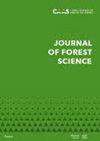埃塞俄比亚家庭为森林保护付费的意愿:综述
IF 1.1
Q3 FORESTRY
引用次数: 1
摘要
近年来,以发展中国家为背景进行的环境评价研究越来越频繁。然而,回顾和考察环境评价研究的文献是有限的。因此,本文对过去二十年(2000年至2022年5月)在埃塞俄比亚开展的森林或有价值评估研究进行了文献综述,重点关注两个具体目标:(i)检查家庭愿意为森林保护支付的资源数量(WTP),以及(ii)确定家庭WTP的决定因素。结果表明,在货币和劳动时间上,每户年平均WTP分别降低了0.41美元(2.63 birr)和7.04人日。而埃塞俄比亚森林管理和保护的平均最高年度收入为每户货币支付53.52美元和每户劳动时间贡献94.34人日。这一发现表明,在被检查的研究中,包括和估计非货币支付工具中的WTP的比例有限,这意味着需要对该主题进行未来的研究。结果表明,人口和社会经济变量、实物资产所有权、制度和基础设施服务以及投标价格变量是家庭WTP的主要决定因素。这表明,涉及公众参与的国家森林保护干预计划需要在计划的设计和实施中考虑确定的WTP决定因素。此外,这一发现表明,在影响WTP的某些决定因素的作用和方向上存在混合结果。这表明迫切需要对研究主题进行全面的未来研究。本文章由计算机程序翻译,如有差异,请以英文原文为准。
Households’ willingness to pay for forest conservation in Ethiopia: A review
Environmental valuation studies in the context of developing countries have become more frequent in recent years. However, literature which reviews and examines the environmental valuation studies is limited. Thus, this paper performed a literature review on forest contingent valuation studies conducted in the Ethiopian context in the past two decades (2000 to May 2022), focusing on two specific objectives: (i) to examine amounts of resources that households are willing to pay (WTP) for forest conservation, and (ii) to identify determinants of households’ WTP. Results indicate the mean lower annual WTP of USD 0.41 (2.63 birr) and 7.04 man-days per household in money and labour time, respectively. Whereas the mean upper annual WTP of USD 53.52 per household in monetary payment and 94.34 man-days per household in labour time contribution are found for the management and conservation of forest in Ethiopia. The finding reveals that there is a limited proportion of the examined studies that included and estimated WTP in a non-monetary payment vehicle, implying a need for future researches on the topic. The result shows that demographic and socio-economic variables, physical assets ownership, institutional and infrastructural services and bid price variables were the main determinants of households’ WTP. This suggests that the forest conservation intervention program involving public participation in the country needs to consider the identified determinants of WTP in design and implementation of the program. Moreover, the finding indicates the presence of mixed results on the effect and direction in which some determinants of WTP are affected. This recommends a pressing need for comprehensive future studies on the research theme.
求助全文
通过发布文献求助,成功后即可免费获取论文全文。
去求助
来源期刊

Journal of forest science
Forestry-
CiteScore
2.30
自引率
9.10%
发文量
48
审稿时长
6 weeks
期刊介绍:
Original results of basic and applied research from all fields of forestry related to European forest ecosystems and their functions including those in the landscape and wood production chain are published in original scientific papers, short communications and review articles. Papers are published in English
 求助内容:
求助内容: 应助结果提醒方式:
应助结果提醒方式:


